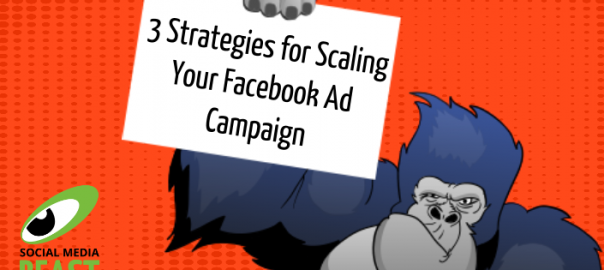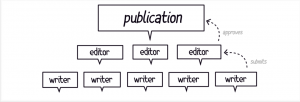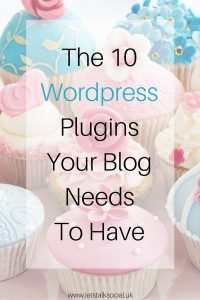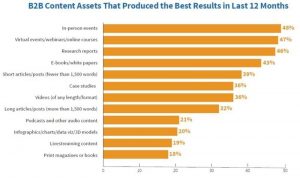
Hey Big Spender
One of the great strengths of advertising on Facebook is its wide array of audience targeting options. If you can’t convert leads cost-effectively through interest and behavioral targeting, you can create many kinds of custom and lookalike audiences and try that. For example, if single-session conversions are not forthcoming, you can easily back it up with a retargeting campaign without having to involve another platform.
Now here’s a challenge: let’s say you find a campaign and targeting scenario that works really well. It’s been humming along for a week or two, spending $ 5 per day and giving you leads at an obscenely low cost. Now you want to maximize this. You want to open up the floodgates and pump as much ad spend as you can through this wonderful new campaign.
But as you start spending more, you notice a problem. Your impression and lead costs start climbing as well. As you get up to $ 30 or $ 40 per day in spend, you notice to your horror that this once-great ad set is no longer converting leads economically.
What’s more, you’re well aware that large corporations and digital ad agencies are, at this moment, spending millions of dollars a day in Facebook advertising. How on earth can they spend so much and still drive economic lead traffic, when your once-glorious ad set coughs and sputters at even modest spending?
After losing quite a lot of sleep and trying many different things, here’s what I can tell you about scaling up a Facebook campaign and still controlling your costs.
Facebook Ad Bidding Behind the Scenes
Just to review: Facebook, like all other display ads, bid based on impressions. Even when you tell Facebook that you want to be charged per click, Facebook is still, under the hood, bidding on impressions. It does a little calculation on its own to translate this cost into a chargeable cost per click.
The game with Facebook is to target a receptive audience segment that improves your conversion costs to a greater degree than the premium you pay to target them. For example, let’s say you can run an ad to the whole U.S. at $ 1.00 CPM (per thousand impressions). Very cheap, but your web traffic is not relevant and your conversion rate is low. Let’s say it’s costing you $ 50 a lead at that conversion rate.
If you change your targeting to some kind or relevant custom audience, your impression cost will absolutely go up. The tighter and more in-demand the audience, generally, the higher the impression cost. Let’s say that your new impression cost is $ 10 CPM. Your ads are now 10 times more expensive to run. But because your resulting traffic is more relevant, your conversion rates are much higher. This might push your lead cost down to $ 30/lead despite the increase costs of the ads. Welcome to the Facebook ad game.
Facebook Ad Audience Saturation
The breakthrough in thinking came to me when someone pointed out that Facebook does with people what Google Adwords does with search keywords. So any principles that apply to choosing relevant search keywords within Adwords also apply, in abstract, to choosing a relevant audience in Facebook.
One principle is called saturation. Lat’s say that, within Adwords, you have two phrase-match keywords (and only two) that produce high-conversion traffic. There are other phrases capable of conversion, of course, but less economically so. So, assuming you have high-quality ads, landing pages, etc., your optimization strategy will be to bid such that you appear on every search result for your two best keywords. You max-out those searches, in other words. Then, if you still want to invest more in search advertising, you have to bid on incremental keywords with lower conversion potential, and watch as your average lead costs creeps upwards.
Same idea with Facebook, but instead of saturating certain searches, you’re saturating certain audiences. The tighter and more in-demand your target audience, the more bid competition you’ll run into for those impressions. If you’re not careful about how you set up your ad groups you could even inadvertently bid against yourself for impressions. That’s a large reason why your costs are going up as you increase your ad spending.
Scaling Strategies
Here are some strategies to help you structure a campaign that you want to scale up. These tips will help you keep your lead costs low, despite higher spending.
1) Many Small Ad Groups Are Better Than One Big Workhorse
The temptation, once you find an ad group that’s finally working well for you, is simply to adjust the spending higher. This is, after all, the least amount of work.
There is some wisdom out there that suggests that high-spend ad groups send a signal to Facebook that you have extra coin to spend. I’m not saying that they would do this, but it’s in Facebook’s interest to up the impression costs on advertisers who want to spend a lot of money. We can never really know for sure if our costs are going up commensurate with actual impression demand.
Aim for a campaign of 7-15 small ad groups, with similar but slightly different targeting. The diversification helps your campaign because different ad groups will have good and bad days at different times. The lower ad spend per ad group will work more favorably for your overall costs.
If you decide, for whatever reason, that you want a large workhorse ad group, I suggest looking into the bidding caps. I’ve controlled costs on some of these by simply capping the bidding. This works somewhat, but the ad group performance tends to be erratic.
2) Similar But Slightly Different Targeting
I once had a client for which the only economic targeting scheme was a lookalike audience based off of an email database. How am I supposed to diversify into small ad groups when there’s only one targeting scheme that meets my economic criteria?
There are a couple of things you can try. The lazy option is to simply duplicate your existing ad set 7-15 times and have identically targeted ad sets running concurrently. I have not yet tested this in any meaningful way. My understanding is that Facebook will recognize this for what it is: one big ad group split up, and structure its costs accordingly. Also, the lack of targeting diversification means that your ads sets are more likely to have all of their bad days at the same time.
I do two things to diversify targeting. First, I look at the ad groups that are working, and try new targeting that would follow logically. If a lookalike on an email database is working well, I’ll also try a lookalike on the conversion pixel traffic, etc.
The second thing I do is layer targeting on top of what works. So if I know a certain lookalike audience works well, I’ll create several more groups: lookalike + interest 1, lookalike + interest 2, etc. Sure, these audiences will overlap, and they’re not truly diversified. But I just need them to be different enough that they work without necessarily cannibalizing one another.
3) Duplicate and Eliminate
Start with maybe 10 ad groups at first. Put a minimal spend behind each and wait several days for them to optimize. I typically throw out the first two days worth of data, and start evaluating on the data from the third and fourth days. Waiting longer is usually better.
When you evaluate, you want to eliminate the poorest performers and create more groups that resemble the best performers. I usually eliminate the lowest two or three performers at a time. If anything is performing particularly well, I will do two things:
First, I’ll make an exact copy of the ad group with significantly more money behind it. This is so I can se how far it will scale on its own without eradicating the success of the original group. It remains on, running concurrently. The second thing I do is create more ad groups with similar targeting, or targeting that would logically approximate the success that I’m seeing.
Don’t forget to include start dates in the titles of the ad groups. And also don’t forget to throw out the first several days worth of data. I’ve had ad groups convert terribly for four or five days, and then just pop into place and stay there.
For More Information
For more information on social media and other digital advertising, contact Social Media Beast today!
Digital & Social Articles on Business 2 Community(46)
Report Post





